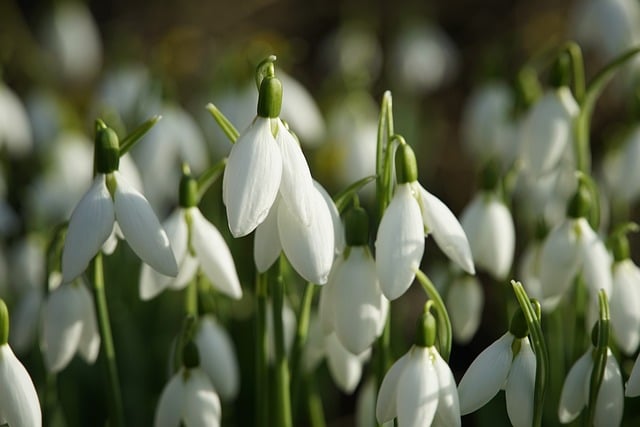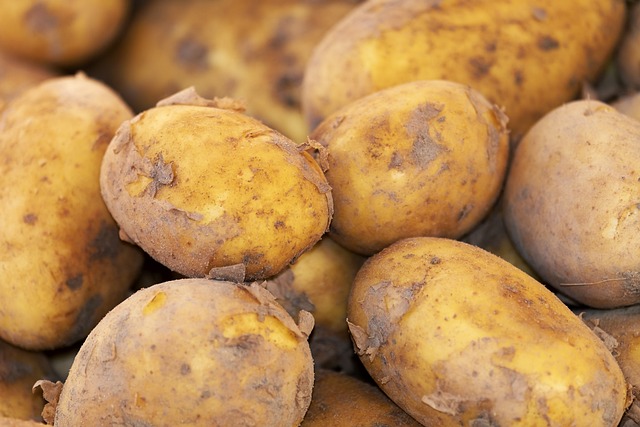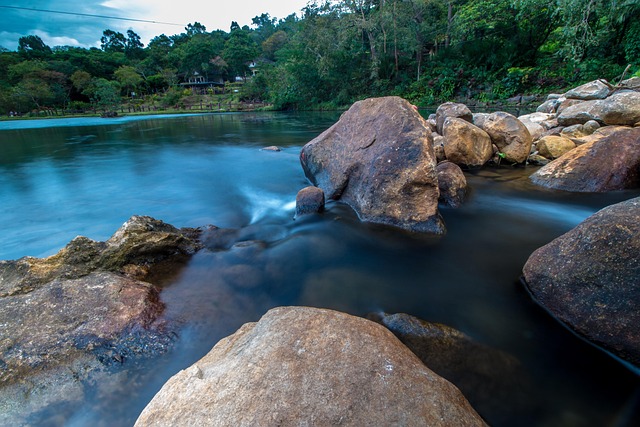natural perfume ingredients
Natural Perfume Ingredients: Unveiling the Scent of Sustainability
Introduction
In the realm of perfumery, where fragrances weave intricate tales and evoke powerful emotions, a quiet revolution is taking place. Natural perfume ingredients are emerging as a game-changer, offering an alternative path to aromatic creation that respects both nature and human health. This article delves into the captivating world of these ingredients, exploring their definition, historical significance, global impact, economic implications, technological innovations, regulatory landscape, challenges, successful applications, and a glimpse into their promising future. By the end, readers will gain a comprehensive understanding of why natural perfume ingredients are not just a trend but a necessary evolution in the industry.
Understanding Natural Perfume Ingredients: An Overview
Natural perfume ingredients refer to the essential oils, botanical extracts, and other organic materials derived directly from plants, flowers, fruits, resins, and even certain insects. These ingredients serve as the building blocks for crafting fragrances that are both captivating and environmentally conscious. The concept of using natural elements in perfumery is not new; its roots can be traced back centuries ago when ancient civilizations harnessed the power of nature to create aromatic compounds. However, modern natural perfume making has evolved to incorporate advanced extraction techniques, ensuring a more diverse and concentrated range of ingredients.
The core components of natural perfume ingredients include:
- Essential Oils: These are highly concentrated liquids extracted from plants through methods like steam distillation or cold pressing. Each oil carries the unique scent profile of its source, offering a vast array of aromatic possibilities. For example, Lavender essential oil is known for its calming floral notes, while Peppermint provides a refreshing menthol aroma.
- Botanical Extracts: Derived from plant parts such as leaves, stems, or roots, these extracts offer subtler, more nuanced scents. They are often used in combination with essential oils to create complex fragrances. Rose petal extract, for instance, adds a delicate floral touch to perfumes.
- Resins and Balsams: Resins like Sandalwood and Labdanum, as well as balsams such as Benzoin, contribute warm, woody notes to fragrances. They have been prized in perfumery for their ability to add depth and richness to scents.
- Absolute Oils: These are highly concentrated extracts obtained through solvent extraction, preserving the essence of delicate flowers or rare materials. Rose Absolute, for example, is a luxurious ingredient known for its intense floral aroma.
Historically, natural ingredients have been at the heart of perfumery since ancient times. Ancient Egyptians, Greeks, and Romans used natural oils and resins to create fragrances, often infusing them in fabrics or using them therapeutically. However, as synthetic perfumery became more prevalent in the 20th century, the use of natural ingredients took a back seat. Today, there is a growing demand for transparency and authenticity in the fragrance industry, leading to a resurgence of interest in natural perfume ingredients.
Global Impact and Trends
The global market for natural perfume ingredients is experiencing significant growth, driven by several key trends:
| Region | Market Growth (2021-2028) | Main Drivers |
|---|---|---|
| North America | 7.5% CAGR | Rising consumer awareness of natural products and strict cosmetic regulations |
| Europe | 6.2% CAGR | Increasing demand for cruelty-free and sustainable cosmetics |
| Asia-Pacific | 8.8% CAGR | Rapid urbanization and growing middle class embracing luxury perfumes |
| Latin America | 5.3% CAGR | Rising interest in traditional herbal remedies and natural beauty products |
Regional Differences: Each region contributes uniquely to the landscape of natural perfume ingredients. For instance, France is renowned for its expertise in perfumery, while countries like India and Morocco are known for their diverse botanical resources. China, too, has a rich history of using natural ingredients in traditional medicine, influencing modern perfumery practices.
Sustainability Focus: One of the most significant global trends is the push towards sustainability and ethical sourcing. Consumers are increasingly conscious of the environmental and social impact of their purchases, leading many perfume brands to embrace natural ingredients as a way to meet these demands. This trend is expected to continue, shaping the future of the industry.
Economic Considerations
The economic aspects of natural perfume ingredients are multifaceted, impacting both production and consumption:
Market Dynamics
- Supplier Diversity: The market is characterized by a diverse range of suppliers, from small artisanal producers to large-scale extractors. This diversity ensures a varied selection of ingredients but also presents challenges in terms of standardization and quality control.
- Pricing Fluctuations: Natural ingredient prices can be volatile due to factors like availability, seasonality, and demand. For instance, rare floral absolutes may have limited supply, leading to higher costs.
- Premium Pricing: Natural perfumes and ingredients often command a premium price due to their perceived quality, uniqueness, and ethical sourcing practices. This premium pricing strategy is a key differentiator in the market.
Investment Patterns
- Venture Capital: The natural beauty sector, including perfumery, has attracted significant venture capital investment. Investors are drawn to brands that prioritize sustainability and innovative use of natural ingredients.
- Acquisitions and Mergers: Established cosmetic companies are acquiring niche natural perfume brands to expand their sustainable product offerings. This trend is driving consolidation in the market.
- Direct-to-Consumer (DTC) Models: Many natural perfume startups have adopted DTC strategies, allowing them to connect directly with consumers and offer personalized products.
Economic Impact on Producers
- Smallholder Farmers: In many developing countries, small farmers play a crucial role in supplying natural ingredients. Fair trade and ethical sourcing practices ensure they receive a fair share of the profits, contributing to local economic development.
- Rural Communities: The cultivation and harvesting of natural perfume ingredients can provide income opportunities for rural communities, promoting sustainable livelihoods.
- Export Potential: Countries with abundant botanical resources have significant export potential in the natural ingredient market, contributing to their national economies.
Technological Advancements
Technology plays a pivotal role in the development and refinement of natural perfume ingredients:
- Advanced Extraction Techniques: Modern extraction methods such as supercritical CO2 extraction and enfleurage allow for more efficient and gentle separation of aromatic compounds from plant materials. These techniques preserve the integrity of essential oils and delicate absolutes.
- Aromatic Analysis: Sophisticated analytical tools like gas chromatography-mass spectrometry (GC-MS) enable precise identification and quantification of volatile compounds in natural ingredients, ensuring product quality and consistency.
- Synthetic Biology: While controversial, synthetic biology offers the potential to create bio-based alternatives to traditional natural ingredients, addressing supply chain issues and reducing environmental impact.
- Digitalization of Sourcing: Blockchain technology is being explored to ensure transparency in the supply chain, allowing consumers to trace the origin and authenticity of their perfume ingredients.
Policy and Regulation
The regulatory landscape surrounding natural perfume ingredients is complex and varies across regions:
- Cosmetic Regulations: Most countries have strict cosmetic regulations that govern the use of ingredients, including those in perfumery. These regulations ensure safety and often encourage the use of natural or organic components.
- Fair Trade and Sustainability Standards: Organizations like Fairtrade International and the Roundtable on Sustainable Palm Oil (RSPO) set standards for ethical sourcing and sustainable production practices. Many perfume brands are adopting these standards to assure consumers of their commitment to sustainability.
- Labeling and Transparency: There is a growing emphasis on transparent labeling, allowing consumers to identify natural ingredients and understand their origins. This trend fosters trust and enables informed consumer choices.
- Intellectual Property Rights: Patents and trademarks protect unique extraction methods or blends of natural ingredients, encouraging innovation while ensuring proper attribution.
Challenges and Criticisms
Despite its many advantages, the natural perfume ingredients sector faces several challenges:
| Challenges | Strategies for Overcoming |
|---|---|
| Limited Supply: The variability in supply due to seasonal availability and rare sources can impact production consistency. | Diversify sourcing, develop sustainable cultivation practices, and explore synthetic alternatives or bio-based solutions. |
| High Cost: Some natural ingredients, especially absolutes and rare oils, are expensive. | Focus on value-added products, educate consumers about the benefits of natural ingredients, and encourage bulk purchasing for cost reduction. |
| Counterfeit Products: The lack of standardized labeling and testing can lead to counterfeit natural ingredients. | Implement robust tracking and verification systems, utilize blockchain technology, and promote education among consumers and industry stakeholders. |
| Consumer Perception: There is a misconception that natural means less effective or more expensive. | Provide educational campaigns, transparent marketing, and product demonstrations to dispel myths and showcase the benefits of natural ingredients. |
Case Studies: Successful Applications
1. Nourish & Blende (United States)
This innovative startup creates natural perfumes and skincare using ethically sourced ingredients from around the world. Their signature line features unique blends like “Forest Floor,” made with a blend of Pine Needle Oil, Amber, and Musk, capturing the essence of a woodland walk. Nourish & Blende has gained popularity for its commitment to sustainability, transparency, and crafting fragrances that evoke specific experiences.
2. Maison Cru (France)
Maison Cru offers luxury natural perfumes crafted with rare and precious ingredients. Their iconic scent “Le Parfumeur” combines Rose Absolute, Jasmine, and Benzoin Resin, creating an intense yet elegant fragrance. The brand has been praised for its artistic approach to perfumery and its focus on quality, using only the finest natural materials.
3. Aromapure (Australia)
Specializing in natural essential oils, Aromapure sources ingredients from local Australian botanicals, ensuring freshness and sustainability. Their range includes popular options like Lemon Balm, Native Sage, and Bush Lavender. The company has established a strong online presence, catering to the growing demand for DIY perfumery and aromatherapy products.
Future Prospects: Trends and Growth Areas
The future of natural perfume ingredients looks promising, with several emerging trends shaping the industry:
- Personalized Perfumery: With advancements in technology, there is a growing trend towards personalized fragrances tailored to individual preferences and skin chemistry. This could involve custom blending or digital perfumery tools that guide users through scent creation.
- Sustainable Packaging: Brands are increasingly adopting eco-friendly packaging solutions, such as biodegradable materials or recycled glass, to reduce their environmental impact.
- Digital Education: Online platforms and apps will continue to play a vital role in educating consumers about natural ingredients, their benefits, and proper application techniques.
- Global Sourcing and Collaboration: As the market expands globally, there will be increased collaboration between countries, enabling diverse sourcing and innovative product development.
- Integration with Skincare: Natural perfume ingredients are expected to find more applications in skincare products, leveraging their aromatic and therapeutic properties for overall well-being.
Conclusion: The Aromatic Revolution
Natural perfume ingredients represent a significant shift towards sustainability, transparency, and respect for both nature and human health in the fragrance industry. As consumers become increasingly conscious of the environmental and ethical implications of their purchases, natural ingredients are poised to play a pivotal role in shaping the future of perfumery. Technological advancements, combined with stringent regulations and a growing global market, create a dynamic landscape where innovation meets tradition.
FAQ Section:
Q1: Are natural perfume ingredients more effective than synthetic ones?
A: Effectiveness is subjective and depends on personal preference. Natural ingredients offer unique aromatic profiles and therapeutic benefits, while synthetics provide consistency. Many natural compounds are highly concentrated and potent, ensuring effectiveness in smaller quantities.
Q2: How can I ensure the authenticity of natural perfume ingredients?
A: Look for transparent labeling, third-party certifications (e.g., Fairtrade or RSPO), and detailed ingredient lists. Blockchain technology is also being used to track ingredients from source to product, ensuring their authenticity.
Q3: Can natural ingredients be as long-lasting as synthetic fragrances?
A: Longevity varies depending on the ingredients used and the concentration. Some natural oils may require higher concentrations to achieve comparable longevity. However, proper formulation and blending techniques can enhance their lasting power.
Q4: Are there any health risks associated with using natural perfume ingredients?
A: When used correctly, natural ingredients are generally safe. Allergies or sensitivities may occur, so patch testing is recommended. Certain rare materials or extracts require careful consideration due to potential irritants, but proper regulation ensures safety standards.
Q5: How can I support sustainable practices in the perfume industry?
A: Choose brands that prioritize ethical sourcing, fair trade, and transparent labeling. Support local artisans and small businesses using natural ingredients. Educate yourself about the environmental impact of different ingredients and make informed choices.













